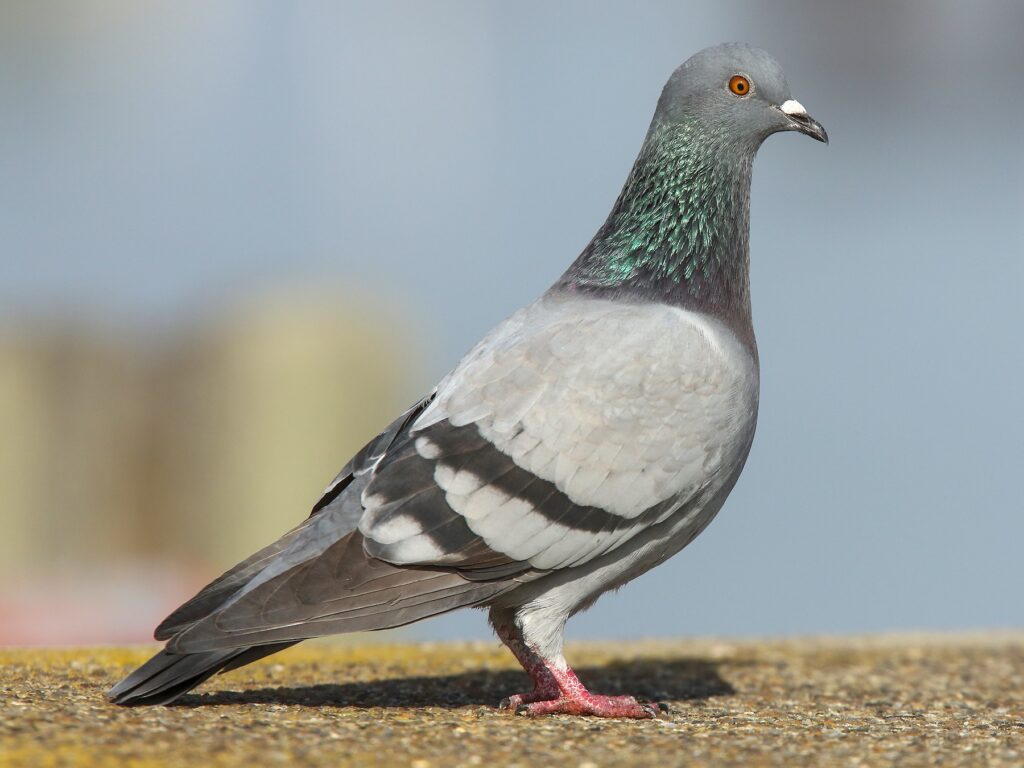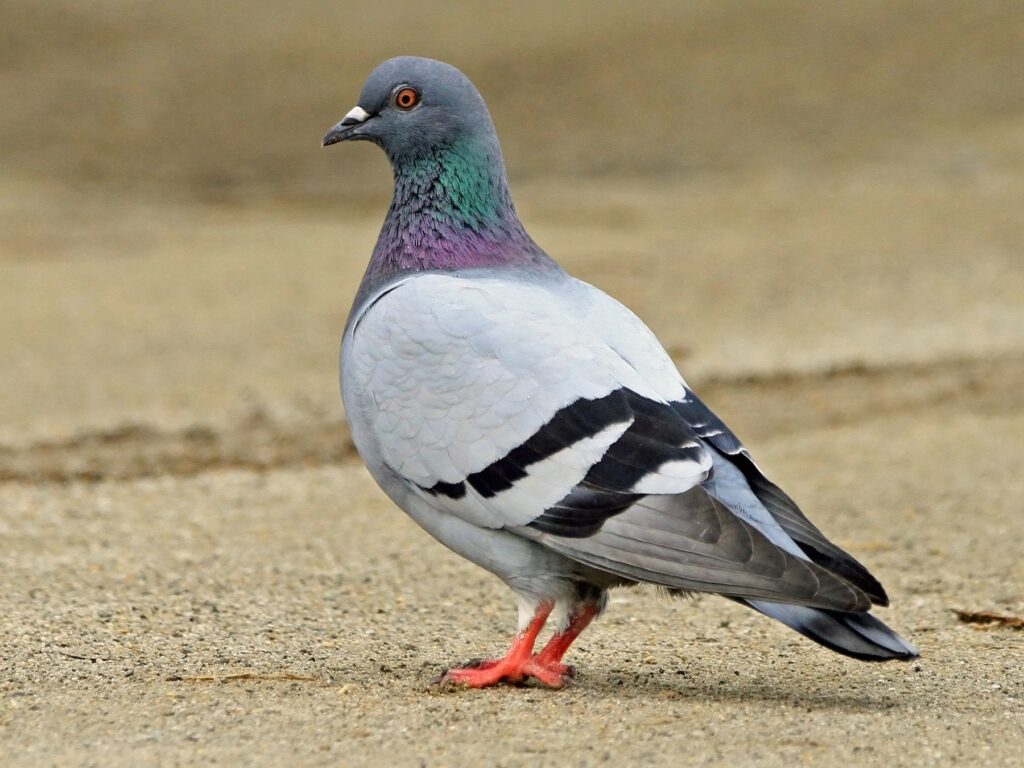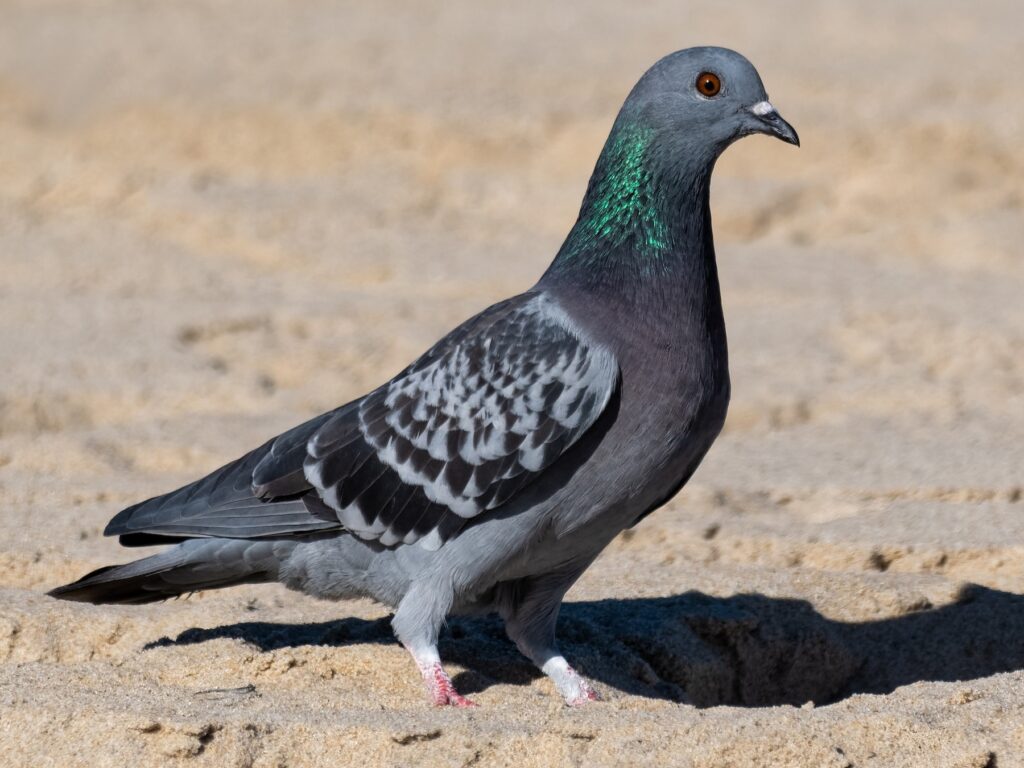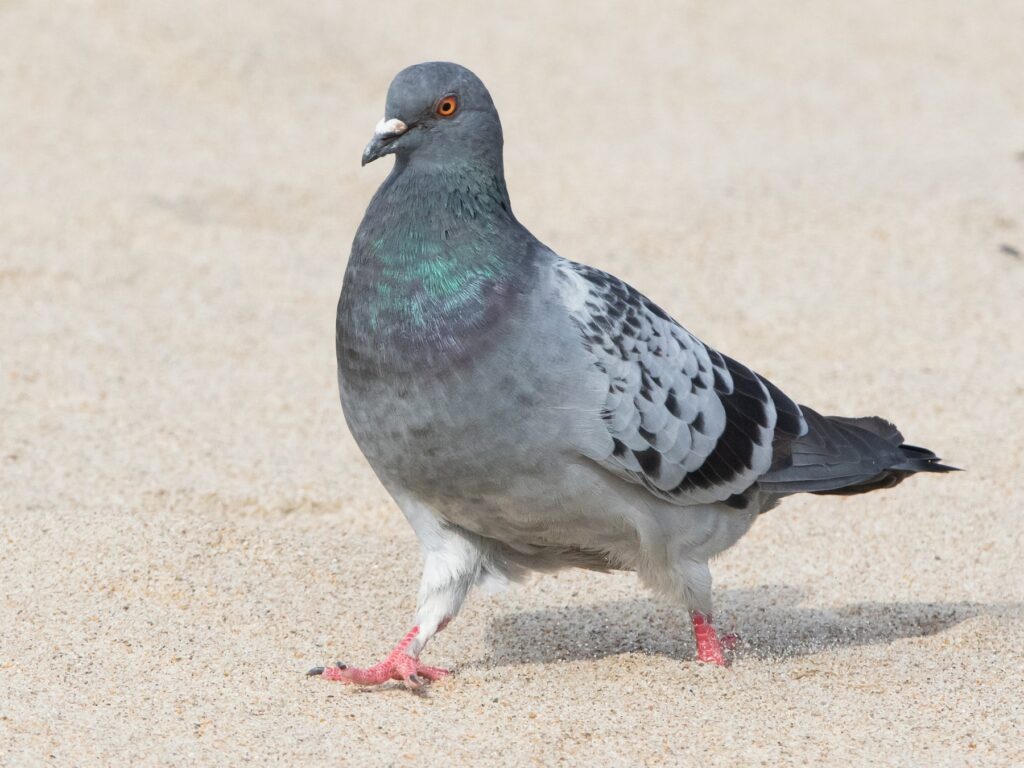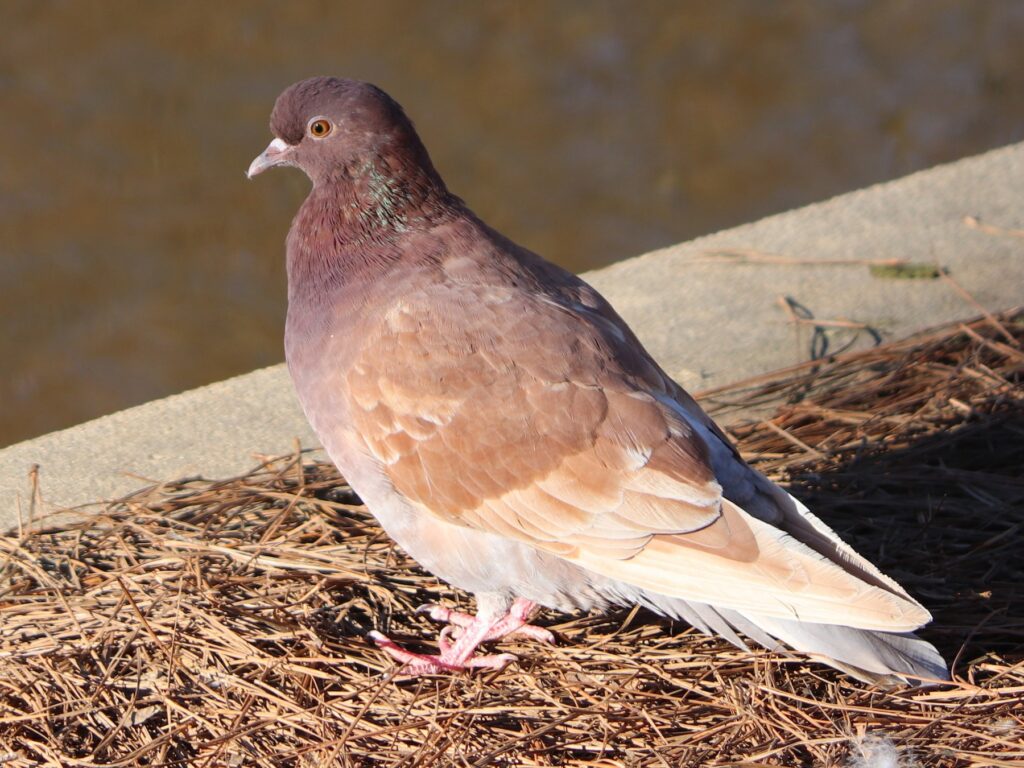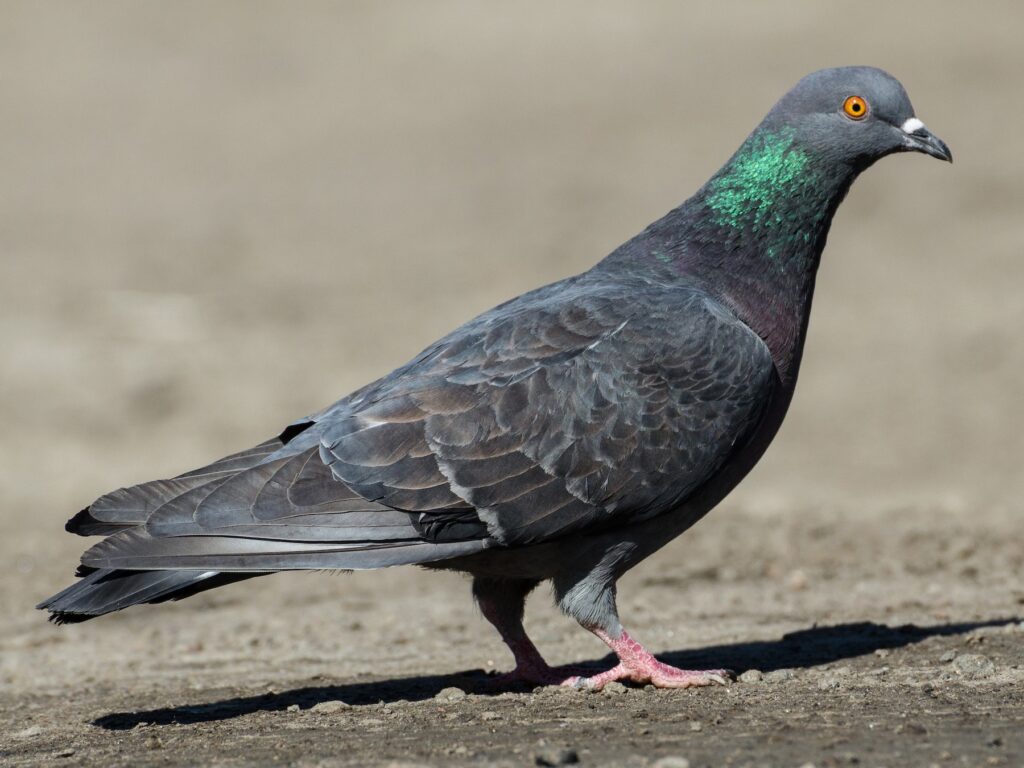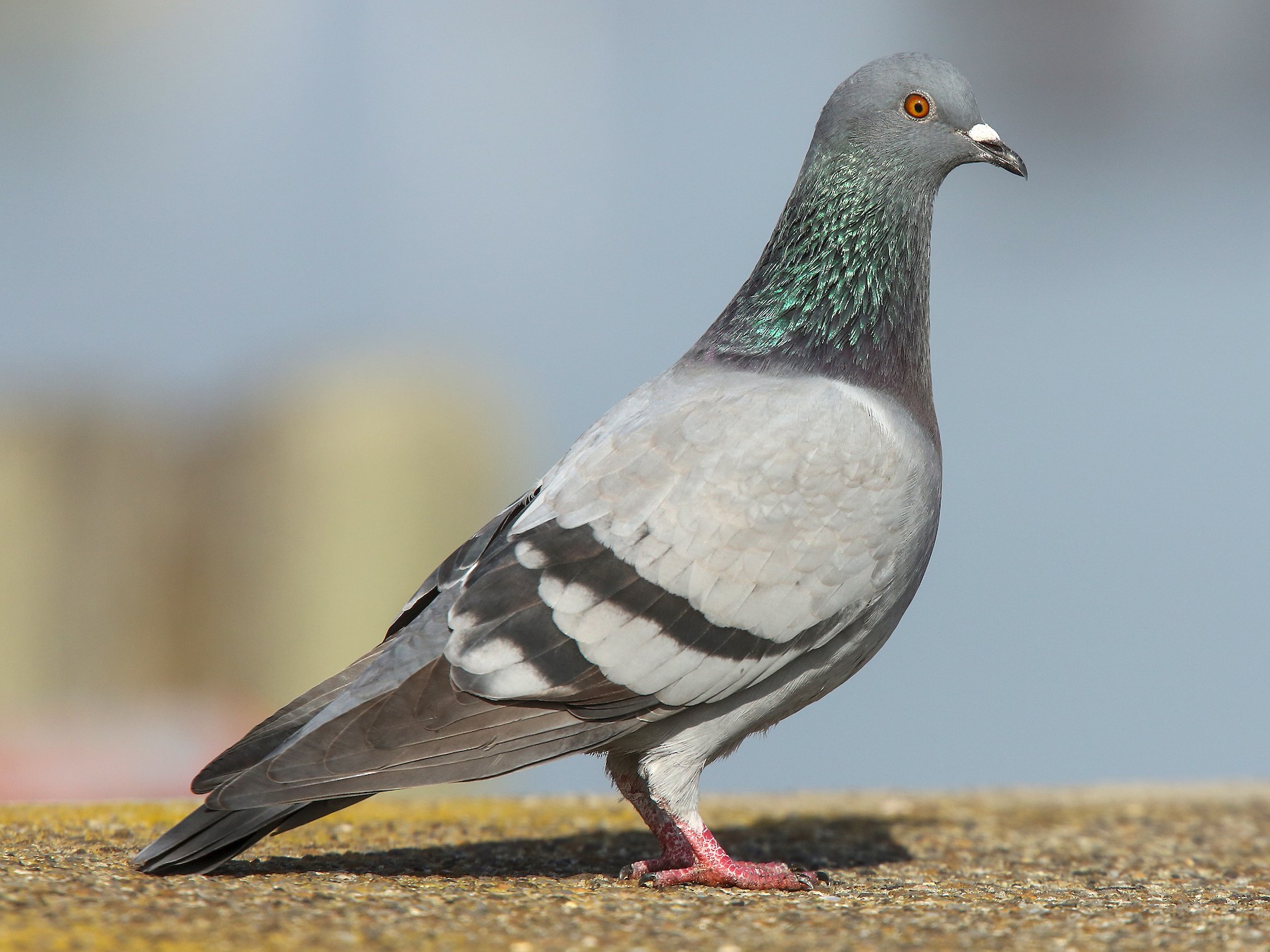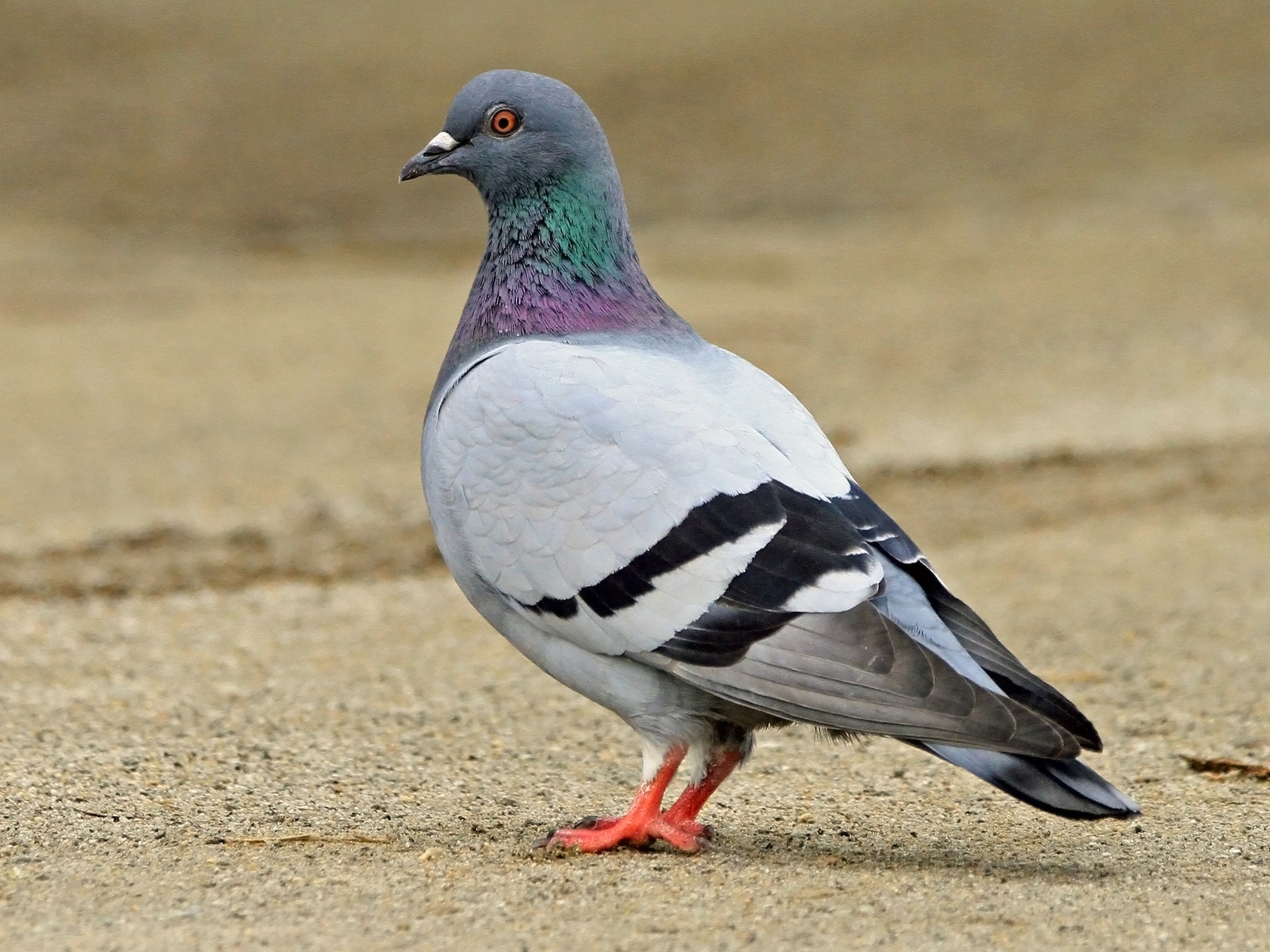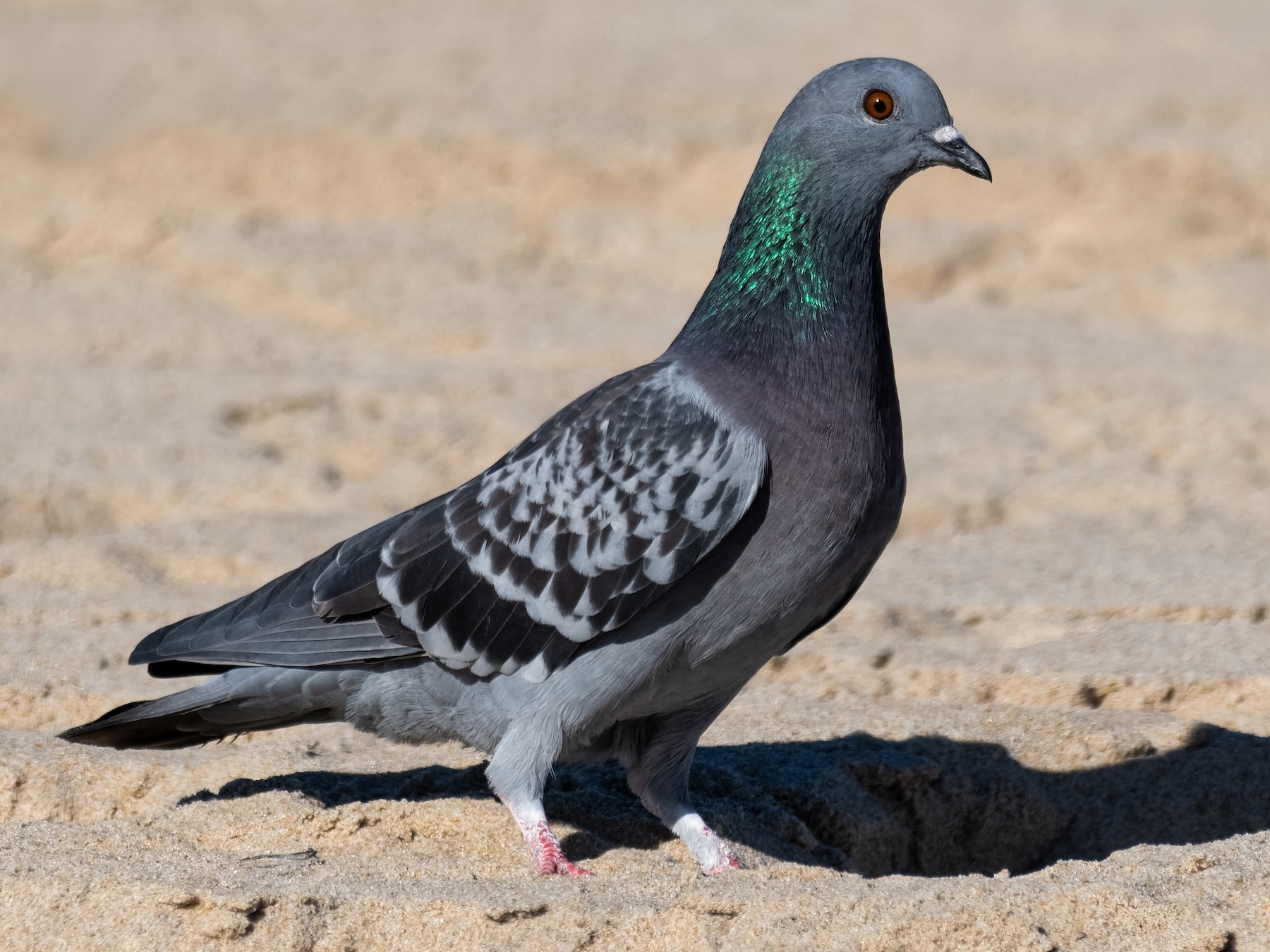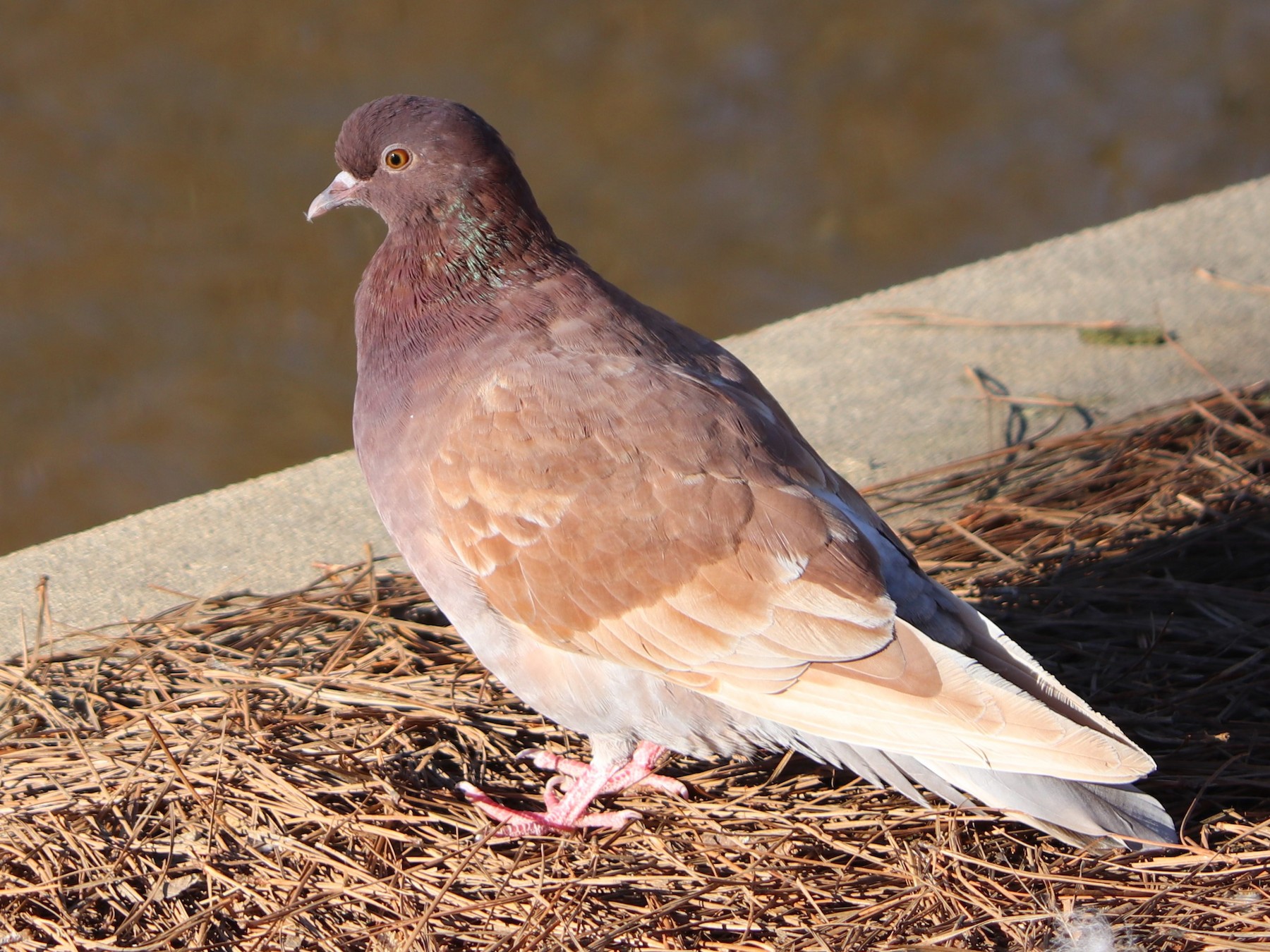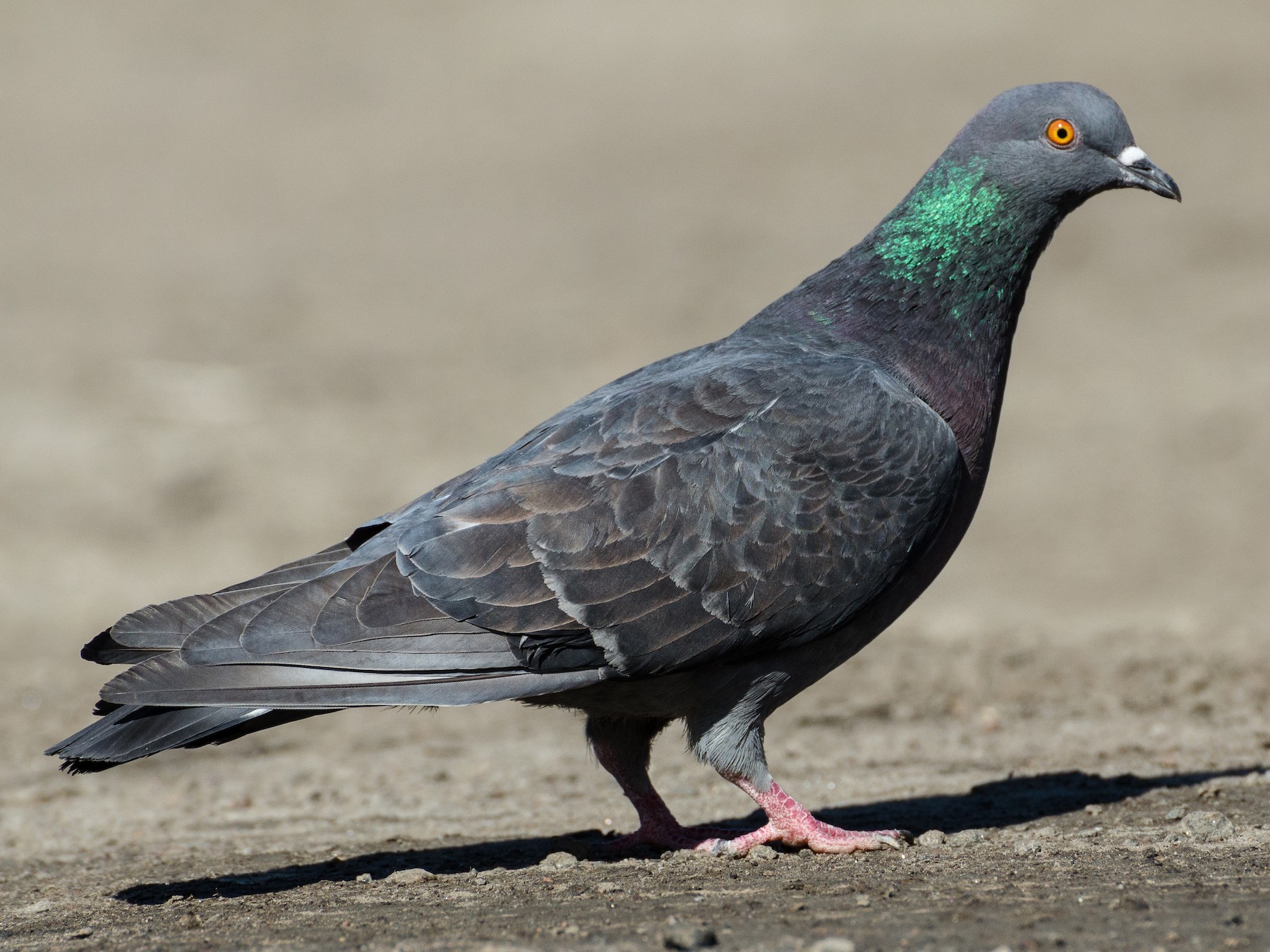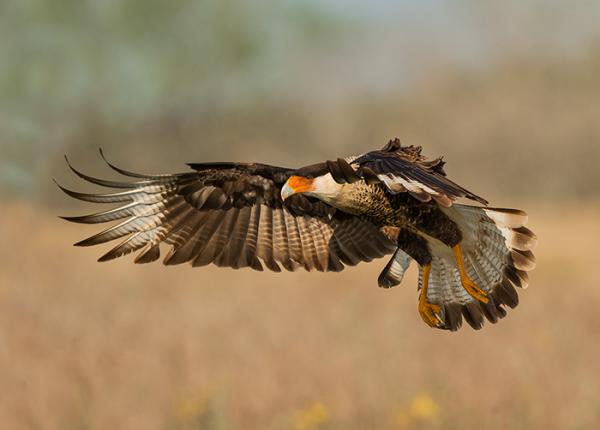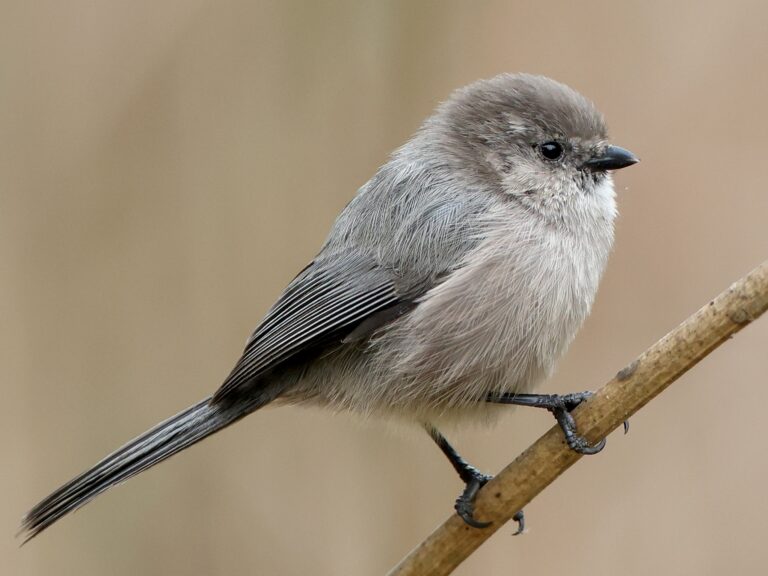Rock Pigeon: The Resilient Urban Bird Taking Over Cities
Rock pigeons are among the most familiar birds in urban areas around the world. Often seen perched on buildings and foraging for food, these birds have adapted exceptionally well to human environments. They are known for their remarkable ability to find their way home, which has made them popular as racing and messenger birds throughout history.
These adaptable birds thrive in a variety of habitats, primarily where food sources are readily available. They usually feed on seeds, grains, and fruits, using their strong beaks to break open tough shells. Their social behavior and unique life cycle contribute to their success as a species in diverse settings.
Key Takeaways
- Rock pigeons are highly adaptable birds found in urban settings.
- They primarily feed on seeds and grains while foraging.
- Their navigation skills have made them important in history as messenger birds.
Species Overview
The Rock Pigeon, scientifically known as Columba livia, is a common bird found in urban areas and natural habitats. It belongs to the family Columbidae and is notable for its adaptability and strong connection to humans. This section covers its scientific classification and physical description.
Scientific Classification
Columba livia is classified within the animal kingdom as follows:
- Kingdom: Animalia
- Phylum: Chordata
- Class: Aves
- Order: Columbiformes
- Family: Columbidae
- Genus: Columba
- Species: livia
Rock Pigeons are often divided into several subspecies, which vary in color and size. This classification highlights their diversity, with some commonly found in urban areas and others in wild settings.
Physical Description
Rock Pigeons typically range from 30 to 34 cm in length. They have a robust body and a distinctive shape. Their wings are long and pointed, aiding in swift flight.
These birds have a variety of plumage colors, including gray, brown, and white. Many exhibit iridescent feathers around the neck. They are characterized by two black bands across their wings, which are quite visible in flight. This unique appearance makes them easily identifiable in their urban and rural environments.
Habitat and Distribution
Rock Pigeons thrive in diverse environments, showcasing their flexibility in habitat choices. Their distribution spans urban landscapes as well as rural areas, making them one of the most common bird species globally.
Geographic Range
Rock Pigeons (Columba livia) inhabit a wide geographic range. They are native to Europe, North Africa, and parts of Asia. Over time, they have adapted to various regions worldwide, including North America, Australia, and New Zealand.
Their presence is particularly notable in urban areas where they coexist with humans. Populations are concentrated in cities due to an abundance of food sources and nesting sites. These birds are often found around buildings, parks, and piers, highlighting their adaptability to human-made environments.
Adaptations to Urban Environments
Rock Pigeons demonstrate several adaptations that enable them to thrive in urban settings. They often utilize building ledges, bridges, and other structures for nesting, substituting for cliffs and rocky outcrops in their natural habitats.
Their diet includes a variety of food sources available in cities, such as discarded food and birdseed provided by people. Moreover, Rock Pigeons have learned to navigate bustling urban landscapes. They adjust their activity patterns to avoid peak human traffic times, showcasing their remarkable ability to adapt and survive alongside humans.
Behavior and Life Cycle
Rock Pigeons exhibit unique behaviors and a structured life cycle that revolve around their reproductive habits and social interactions. Understanding these aspects provides insight into their adaptability and ecological roles.
Reproductive Habits
Rock Pigeons are monogamous and form strong pair bonds. They typically breed throughout the year, depending on the climate and food availability.
Nesting occurs in various locations, including ledges and building eaves. The female lays 1 to 2 white eggs per clutch. Both parents share incubation duties, which lasts around 18 days.
Nests are built using twigs, grass, and other materials, creating a stable environment for the eggs and chicks. After hatching, the parents feed the young with a nutrient-rich substance known as “pigeon milk,” produced in their crops.
Chicks fledge in about 4 to 6 weeks, becoming independent quickly. They can reproduce by the age of 6 months, allowing for rapid population growth.
Social Structure
Rock Pigeons are highly social birds that often form flocks. These flocks can consist of hundreds of individuals, providing safety and enhancing foraging efficiency.
Within these groups, members engage in various behaviors, such as preening and vocalizing, which help strengthen social bonds.
Hierarchy can be observed, with dominant birds often taking the best feeding spots. Flock dynamics enable them to communicate risks, such as predators, efficiently.
Rock Pigeons also show strong homing abilities, returning to familiar locations after being displaced, which underscores their social and environmental adaptability. This homing instinct is crucial when they return to their nesting sites during breeding.
Diet and Foraging
Rock pigeons have a diverse diet that primarily consists of seeds and grains. They often forage in urban areas as well as in agricultural regions. Their adaptability allows them to consume a variety of food sources.
Typical Diet
The typical diet of rock pigeons includes a mix of waste grains, seeds, and some fruits. They are particularly fond of grains such as wheat, corn, and barley. In urban settings, they also eat leftover food scraps from humans.
Their ability to digest tough seeds is aided by a muscular organ called the gizzard, which helps break down food. Rock pigeons have also been observed foraging for small insects, especially when other food sources are scarce.
Feeding Behavior
Rock pigeons are primarily ground feeders. They peck at the ground to find food, often in flocks. This social behavior helps them locate food more efficiently and enhances their safety from predators.
They typically engage in foraging during the day and prefer to rest during the night. When feeding, pigeons will also use their crop to store food temporarily, allowing them to digest it later. Their adaptability to various food sources makes them successful in both rural and urban environments.
Interaction with Humans
Rock pigeons have a long history of interaction with humans. These interactions have led to both domestication and economic impacts, reflecting their adaptability and value in various settings.
Domestication
The relationship between rock pigeons and humans began thousands of years ago. Domestic pigeons are a direct descendant of wild rock pigeons. Early humans valued them for their ability to carry messages over long distances.
Pigeons were bred for specific traits, including color and size. This selective breeding resulted in a variety of domestic pigeon breeds. Today, they are kept as pets, racers, and show birds.
Urban environments often host feral pigeons, descendants of these domesticated birds. In cities, they rely heavily on human food sources, which has allowed their populations to thrive.
Economic Impact
Rock pigeons significantly impact local economies, particularly in urban areas. They are often seen as pests at restaurants and parks. Their presence can lead to damage, especially from droppings, which can corrode buildings and infrastructure.
However, pigeons also offer economic benefits. Racing pigeons are popular in several regions, with races attracting substantial prize money. Additionally, the pigeon industry contributes to the pet market.
Their adaptability makes them resilient, allowing them to thrive alongside human activities. This interaction showcases their dual role in society: as both a nuisance and a commodity.
Frequently Asked Questions
This section addresses common queries about rock pigeons, covering their characteristics, habitat, and legal status. It provides detailed information to enhance understanding of this species.
What distinguishes a rock pigeon from a dove?
The main distinction between rock pigeons and doves lies in their size and coloration. Rock pigeons are typically larger, with a more robust body. They often exhibit a variety of colors, including gray, white, and brown, while doves generally have smoother and lighter hues.
What are the typical characteristics of a rock pigeon’s habitat?
Rock pigeons thrive in urban environments, adapting well to city life. They prefer places with ample food sources and places to nest, such as buildings and cliffs. They can also be found in parks and open areas where food is abundant.
How do you differentiate between male and female rock pigeons?
Male rock pigeons tend to be slightly larger than females. Males often display brighter and more vibrant colors to attract mates. During courtship, the male performs specific behaviors, such as puffing up their chest, to showcase their size and plumage.
What does a rock pigeon’s diet consist of?
Rock pigeons primarily eat seeds, grains, and fruits. They enjoy foods like corn, wheat, and legumes. In urban settings, they often scavenge for food from human sources, making their diet quite diverse.
Is it legal to keep a rock pigeon as a domestic pet?
In many areas, keeping rock pigeons as pets is legal, but regulations may vary. It’s essential to check local laws regarding pet ownership. Some regions may require permits or have specific guidelines to ensure the well-being of the birds.
What are the identifying traits of a white rock pigeon?
White rock pigeons are distinguished by their pure white feathers and often have red or light-colored eyes. These pigeons may also have a unique pattern of soft feathering and are commonly seen in domestic and ornamental settings, often used in pigeon racing and exhibitions.

